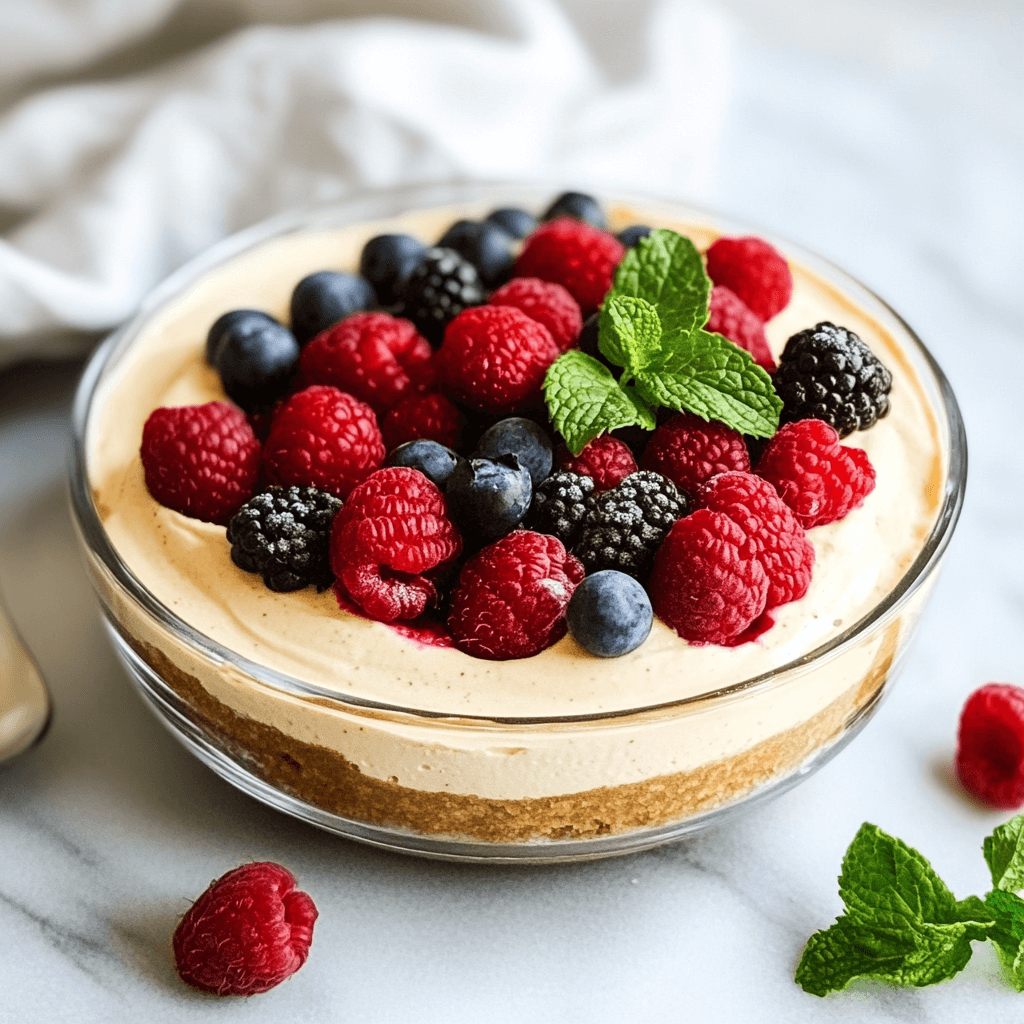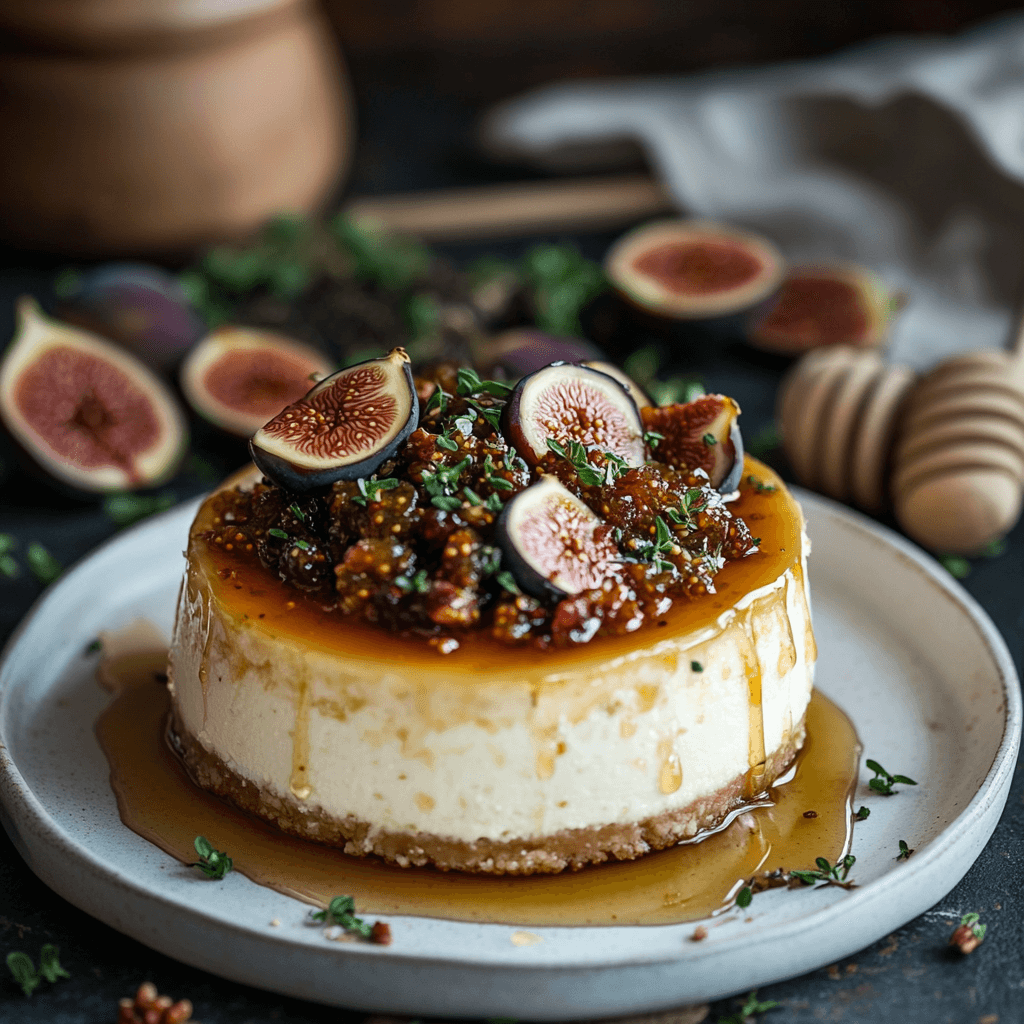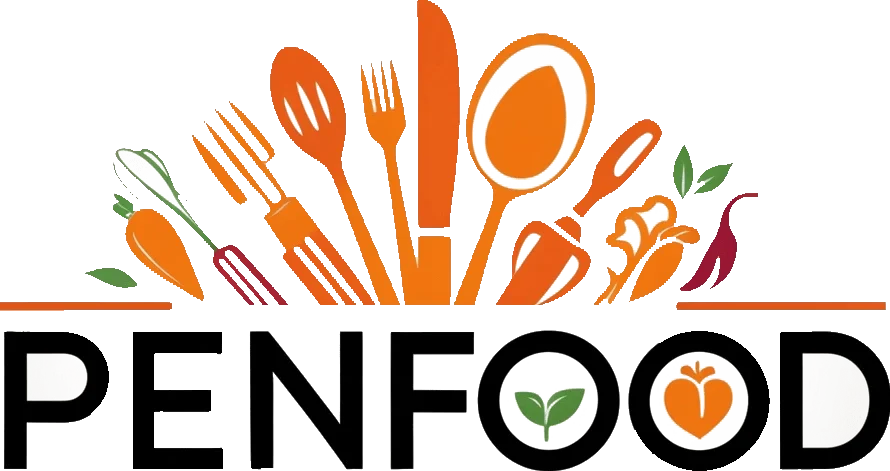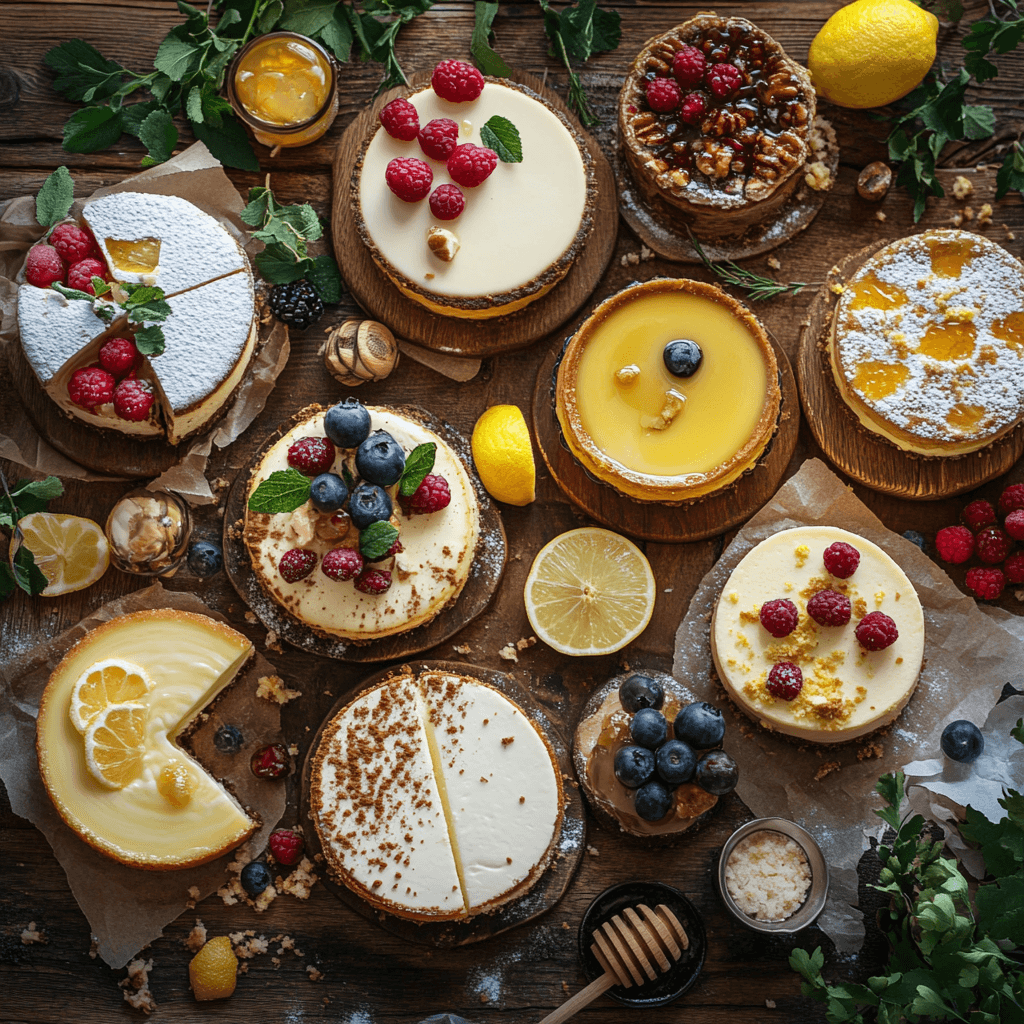Cheesecake is one of the most beloved desserts worldwide, celebrated for its velvety texture and perfectly balanced flavor that marries richness with a hint of tanginess. At the heart of this iconic treat lies the key ingredient: cheese. Choosing the best cheese for cheesecake is crucial, as it determines the dessert’s texture, flavor, and overall appeal. While cream cheese is often the go-to choice, there are other cheeses like ricotta, mascarpone, and goat cheese that can create unique variations of this classic dessert.
This guide dives deep into the best cheese for cheesecake, exploring how different cheeses impact the dessert’s taste and texture. Whether you’re a seasoned baker or a first-time cheesecake maker, this article will help you find the perfect cheese for your next baking adventure.
The Role of Cheese in Cheesecake
Cheese is the cornerstone of any cheesecake recipe, defining its texture, flavor, and structure. While other ingredients like eggs, sugar, and a crust contribute to the dessert’s overall appeal, it is the cheese that gives cheesecake its signature creamy, tangy profile. Let’s dive deeper into the essential role cheese plays in this beloved dessert.
Cheese is the heart of any great cheesecake, providing its creamy texture and tangy flavor. For those who want to master a classic recipe using cream cheese, don’t miss our detailed guide: The Best Philadelphia Cheesecake Recipe – Step by Step, which highlights the perfect balance of flavors in every bite.
Texture—The Foundation of Cheesecake
The texture of a cheesecake is largely determined by the type of cheese used. Cheeses with higher fat content, like cream cheese or mascarpone, result in a richer and creamier cheesecake. On the other hand, lighter cheeses like ricotta or cottage cheese create a more delicate and airy texture, which is ideal for recipes that require a fluffier finish.
Cheese provides the base consistency that holds the cheesecake together. When combined with other ingredients, cheese creates a smooth batter that sets into a velvety texture upon baking or chilling. This unique quality is what makes cheesecakes stand out from other desserts like custards or mousses.
Flavor—A Balance of Sweet and Tangy
Cheese adds a subtle tanginess to cheesecake that balances the sweetness of sugar and the richness of cream or eggs. This tangy note is essential to creating a flavor profile that doesn’t feel overly sweet or cloying. The choice of cheese also influences the depth of flavor: cream cheese offers a neutral yet slightly tangy base, while mascarpone lends a buttery richness, and ricotta provides a mildly sweet, nutty undertone.
Additionally, certain types of cheese bring their regional flair to the recipe. For example, ricotta cheese, commonly used in Italian cheesecakes, introduces a delicate flavor that pairs wonderfully with citrus or almond accents. Understanding these flavor dynamics can help bakers select the best cheese for their desired outcome.
Structure—Binding the Ingredients Together
Cheese plays a critical role in the structure of a cheesecake. Its protein content acts as a binding agent, ensuring that the cheesecake maintains its shape after setting. When mixed with eggs, the proteins in the cheese coagulate during baking, forming a firm yet creamy texture.
This structural quality varies depending on the type of cheese used. For instance, cream cheese produces a dense and firm cheesecake, perfect for the classic New York-style dessert. Ricotta, in contrast, creates a looser and slightly grainy texture, ideal for recipes requiring a light and rustic feel.
Versatility Across Cheesecake Styles
Cheese offers remarkable versatility, allowing bakers to experiment with various styles and regional recipes. Some popular cheesecake types include:
- New York-Style Cheesecake: Dense, rich, and creamy, made primarily with cream cheese.
- Italian Cheesecake: Light and airy, typically featuring ricotta cheese.
- Japanese Cheesecake: Fluffy and souffle-like, often made with a mix of cream cheese and whipped egg whites.
- No-Bake Cheesecake: Silky and smooth, relying on cream cheese or mascarpone for its creamy consistency without the need for baking.
Each of these styles showcases the adaptability of cheese in creating unique textures and flavors.
Why the Choice of Cheese Matters
Choosing the right cheese for your cheesecake can make or break the final result. A poorly selected cheese might result in an unpleasant texture, overpowering flavor, or difficulty in achieving the desired consistency. Understanding the characteristics of different cheeses is crucial for success in the kitchen, whether you’re aiming for a traditional cheesecake or a modern twist.
Why Cream Cheese Is the Most Popular Choice
“Philadelphia cream cheese has long been a favorite for creating rich and creamy cheesecakes. If you’re looking for inspiration, check out The Best Philadelphia Cheesecake Recipe – Step by Step for a detailed guide to making a classic cheesecake using this iconic ingredient.”
When it comes to cheesecakes, cream cheese reigns supreme as the most widely used and beloved option. Its unique combination of texture, flavor, and versatility has made it the gold standard for cheesecake recipes, particularly in North America. But what exactly sets cream cheese apart from other types of cheese? Let’s explore its history, characteristics, and role in creating the perfect cheesecake.
A Brief History of Cream Cheese in Cheesecake
Cream cheese has a fascinating history tied to the evolution of modern cheesecake. While early versions of cheesecake used ingredients like ricotta or cottage cheese, cream cheese became a popular choice in the late 19th century. This shift can be attributed to the invention of commercially produced cream cheese by William Lawrence, a dairyman in New York, in 1872. Lawrence’s product, branded as “Philadelphia Cream Cheese,” became synonymous with quality and eventually found its way into cheesecake recipes.
By the early 20th century, cream cheese had become a staple ingredient in the iconic New York-style cheesecake, solidifying its place in dessert history. Its ease of use, consistency, and flavor quickly made it a favorite among home bakers and professional chefs alike.
The Texture Advantage of Cream Cheese
One of the key reasons cream cheese is so popular is its unparalleled texture. It is naturally smooth, dense, and creamy, making it ideal for cheesecake batters. Unlike other cheeses that may need blending or straining to achieve the right consistency, cream cheese is ready to use straight from the package.
Key Benefits of Its Texture:
- Effortless Blending: Cream cheese integrates easily with other ingredients like sugar, eggs, and cream, creating a homogeneous batter.
- Firm and Creamy Structure: Upon baking, cream cheese provides the dense yet soft consistency that defines a classic cheesecake.
- No Graininess: Unlike ricotta or cottage cheese, cream cheese offers a smooth finish without any gritty or grainy texture.
This texture versatility allows cream cheese to work in a wide range of cheesecake styles, from dense baked versions to light and fluffy no-bake recipes.
The Flavor Profile of Cream Cheese
Cream cheese strikes the perfect balance between mild tanginess and rich creaminess, making it a versatile base for both sweet and savory cheesecakes. Its subtle flavor enhances the sweetness of sugar and the aromatics of vanilla or citrus without overpowering them.
Why It Works:
- Neutral Base: Cream cheese’s neutral flavor allows other ingredients, such as chocolate, fruit, or caramel, to shine.
- Tangy Notes: The slight tang adds depth to the overall flavor profile, preventing the dessert from being overly sweet.
- Consistency Across Brands: Commercial cream cheese products are standardized, ensuring consistent flavor and quality regardless of the brand.
This consistent and balanced flavor makes cream cheese a reliable choice for both traditional and experimental cheesecake recipes.
Versatility in Recipes
Another reason for cream cheese’s dominance is its adaptability. Whether you’re making a dense New York-style cheesecake, a light mousse-like dessert, or even a savory variation, cream cheese can accommodate almost any recipe.
Popular Applications:
- New York-Style Cheesecake: Its richness and density are perfect for creating this iconic dessert.
- No-Bake Cheesecakes: Cream cheese’s creamy texture blends well with whipped cream or gelatin to create a smooth and stable filling.
- Flavored Cheesecakes: Its neutral taste pairs well with a variety of flavors, from classic vanilla to adventurous combinations like pumpkin spice or matcha.
- Savory Cheesecakes: Cream cheese’s tanginess complements savory ingredients like herbs, smoked salmon, or sun-dried tomatoes.
This versatility allows bakers to experiment with endless flavor combinations while relying on the dependable characteristics of cream cheese.
Availability and Accessibility
Cream cheese is readily available in grocery stores worldwide, making it an accessible option for home bakers and professionals alike. It is sold in convenient, pre-measured packages that simplify the baking process. Additionally, it has a relatively long shelf life when refrigerated, making it easy to keep on hand for impromptu baking projects.
Other Advantages:
- Cost-Effective: Cream cheese is affordable compared to some specialty cheeses.
- Easy Substitutions: For those looking to modify recipes, lower-fat or lactose-free versions of cream cheese are widely available.
Its widespread availability and affordability further cement its status as the go-to cheese for cheesecakes.
The Gold Standard for Cheesecake
In summary, cream cheese’s combination of history, texture, flavor, versatility, and accessibility makes it the ultimate choice for cheesecakes. While other cheeses can create delightful variations, cream cheese remains the undisputed champion for its ability to deliver consistent, high-quality results.
Exploring Other Cheeses for Cheesecake
While cream cheese dominates the world of cheesecakes, there’s a whole realm of alternative cheeses that offer unique textures, flavors, and regional flair. Whether you’re looking to recreate a traditional recipe or experiment with new ingredients, exploring these options can add depth and variety to your cheesecake repertoire.
Ricotta – The Star of Italian Cheesecake

Ricotta cheese is a cornerstone of Italian baking and a popular choice for lighter, airier cheesecakes. Its slightly grainy texture and mild sweetness lend a rustic charm to desserts that celebrate simplicity and natural flavors.
Key Characteristics:
- Texture: Ricotta provides a fluffy, light texture that’s distinct from the dense creaminess of cream cheese.
- Flavor: Its nutty and slightly sweet profile pairs beautifully with citrus zest, vanilla, and almond.
- Health Factor: Ricotta is lower in fat than cream cheese, making it a healthier alternative for calorie-conscious bakers.
Best Uses:
- Traditional Italian cheesecakes with lemon, orange, or almond flavors.
- Recipes that require a lighter, more souffle-like texture.
Pro Tip: For a smoother consistency, blend ricotta in a food processor before incorporating it into your batter.
Mascarpone – The Creamy, Decadent Choice

Mascarpone is an Italian cream cheese renowned for its luxurious, buttery texture. It has a higher fat content than traditional cream cheese, making it an excellent choice for indulgent cheesecakes that melt in your mouth.
Key Characteristics:
- Texture: Incredibly creamy and rich, perfect for achieving a velvety finish.
- Flavor: Mild and slightly sweet, with a neutral profile that complements both sweet and savory ingredients.
- Stability: Its high fat content creates a dense structure ideal for no-bake cheesecakes.
Best Uses:
- No-bake cheesecakes where a silky texture is paramount.
- Pairing with bold flavors like espresso, chocolate, or seasonal fruits.
Pro Tip: Avoid overmixing mascarpone, as it can become runny when overworked.
Neufchâtel – A Lighter Alternative
For those looking for a low-fat option without sacrificing flavor, Neufchâtel is an excellent alternative to cream cheese. Originating from France, it has a slightly tangier flavor and a softer texture than its American counterpart.
Key Characteristics:
- Texture: Similar to cream cheese but lighter and less dense.
- Flavor: A tangy, mildly savory profile that balances sweetness.
- Health Factor: Lower in fat and calories than cream cheese.
Best Uses:
- Substitute for cream cheese in recipes for a lighter dessert.
- Cheesecakes featuring fresh fruit toppings or zesty flavors.
Pro Tip: Ensure Neufchâtel is at room temperature for easier mixing and smoother results.
Goat Cheese – A Gourmet Option

Goat cheese might not be a traditional choice for cheesecake, but its bold, tangy flavor makes it a standout ingredient for sophisticated desserts. Its unique profile pairs beautifully with both sweet and savory elements.
Key Characteristics:
- Texture: Soft and creamy when blended, creating a smooth batter.
- Flavor: Distinctly tangy and earthy, adding a gourmet twist to recipes.
- Versatility: Works well in savory cheesecakes or those featuring honey, figs, or herbs.
Best Uses:
- Cheesecakes with a savory edge, like those incorporating rosemary or thyme.
- Pairing with seasonal fruits such as pears, berries, or apples.
Pro Tip: Mix goat cheese with cream cheese or mascarpone to mellow its strong flavor and enhance creaminess.
Cottage Cheese – A Protein-Packed Choice
Cottage cheese is an affordable and protein-rich alternative for cheesecake recipes. While its natural curdled texture might seem unfit for desserts, blending it creates a smooth base that works well in lighter, rustic-style cheesecakes.
Key Characteristics:
- Texture: Creamy when blended, though less dense than cream cheese.
- Flavor: Mild and slightly tangy, ideal for understated desserts.
- Health Factor: High in protein and lower in fat, making it a nutritious option.
Best Uses:
- Rustic cheesecakes with fresh fruit or a simple graham cracker crust.
- Health-conscious recipes focusing on reduced calories and higher protein.
Pro Tip: Strain cottage cheese through a fine mesh sieve before blending to remove excess moisture.
Blending Cheeses for Unique Textures and Flavors
Sometimes, the best results come from combining different cheeses. Blending mascarpone with cream cheese, or ricotta with Neufchâtel, can create a cheesecake that balances creaminess, tanginess, and lightness.
Popular Combinations:
- Mascarpone and Cream Cheese: For an ultra-creamy texture with a rich flavor.
- Ricotta and Cream Cheese: Adds a fluffy finish while retaining creaminess.
- Goat Cheese and Mascarpone: Balances tanginess with buttery smoothness.
Pro Tip: Experiment with ratios to find the perfect combination for your preferred cheesecake style.
Specialty and Regional Cheeses
For adventurous bakers, specialty cheeses like quark (a European soft cheese) or labneh (Middle Eastern yogurt cheese) offer exciting opportunities to explore international cheesecake styles. These options often bring unique flavors and textures to the table.
Best Uses:
- Quark for German-style cheesecakes, often lighter and less sweet.
- Labneh for Middle Eastern-inspired recipes with pistachios or rosewater.
Pro Tip: Adjust sugar levels in the recipe to match the natural tartness of these cheeses.
FAQs About Cheesecake Cheese
Here are answers to some of the most common questions about selecting and using cheese for cheesecakes.
Can I Substitute Cream Cheese in Cheesecake Recipes?
Yes, you can substitute cream cheese with alternatives like mascarpone, Neufchâtel, or ricotta, depending on the desired texture and flavor. Keep in mind:
- Mascarpone: Offers a richer, creamier texture.
- Ricotta: Creates a lighter, grainier cheesecake, ideal for Italian recipes.
- Cottage Cheese: Requires blending to achieve a smooth consistency but can work in lighter recipes.
If substituting, consider adjusting the sugar and moisture levels to match cream cheese’s consistency.
Is There a Lactose-Free Option for Cheesecake Cheese?
Yes, many brands offer lactose-free cream cheese and mascarpone. These options work just as well as their traditional counterparts in cheesecake recipes. You can also use plant-based cream cheese alternatives made from cashews, almonds, or coconut for vegan and lactose-free cheesecakes.
Can I Use Low-Fat Cheese for Cheesecakes?
Low-fat options like Neufchâtel or reduced-fat cream cheese can be used, but they may alter the cheesecake’s texture and flavor. Low-fat cheeses tend to produce a slightly less creamy texture and might require additional stabilizers like gelatin for no-bake recipes.
Why Does My Cheesecake Crack After Baking?
Cracks are often caused by overmixing, baking at too high a temperature, or uneven heating. Cheese plays a role in the structure of the cheesecake, so:
- Use Room-Temperature Cheese: Prevents overmixing and ensures a smooth batter.
- Bake Gently: Use a water bath to maintain an even temperature.
- Cool Gradually: Sudden temperature changes can cause cracks.
Can I Use Goat Cheese in Sweet Cheesecake Recipes?
Absolutely! Goat cheese adds a tangy, earthy flavor that pairs wonderfully with sweet ingredients like honey, figs, or fresh berries. To balance its strong flavor, consider blending it with cream cheese or mascarpone.
How Do I Avoid Lumps in My Cheesecake Batter?
To achieve a smooth batter:
- Use cheese at room temperature to ensure easy blending.
- Beat the cheese with sugar first before adding other ingredients.
- Avoid overmixing after adding eggs to prevent incorporating too much air.
More Relevant Recipes
What Does Mascarpone Taste Like?
What is the Best Cheese for Cheesecake?
Why were Philadelphia cheesecake bars discontinued?
Conclusion
Choosing the right cheese for your cheesecake is key to creating a dessert that perfectly matches your vision. Whether you prefer the classic richness of cream cheese, the lightness of ricotta, or the bold tang of goat cheese, the options are vast. Experiment with different types of cheese, flavors, and textures to find the combination that delights your taste buds.

